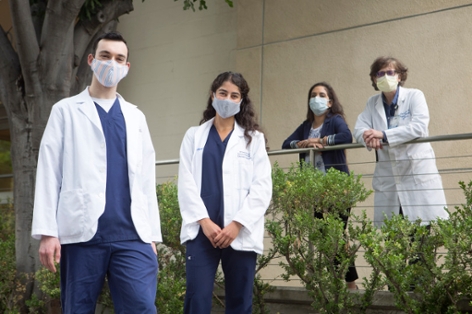 |
|
Elder and Dependent Abuse in the time of COVID-19

Since the beginning of the COVID pandemic through January 2021, Orange County’s population over 65 accounted for 11% of COVID infections and a disproportionate 76% of the deaths; while older adults over 85 years old are only 1.93% of the population, they account for 34% of all deaths. In addition to the dramatic death rates among our older adults, the unique stressors of living through a pandemic have resulted in increased rates of depression and loneliness, and suicide rates have skyrocketed.
Clearly vulnerabilities, including chronic complex disease and dementia, in our seniors place them at increased risk for death and severe disease from COVID. Less apparent, these same vulnerabilities also place seniors at increased risk to elder abuse and neglect, as their decreased function leads to increased dependence on others. While the drastic effects of disease in congregate living are highlighted in the media, other types of abuse and neglect are hidden, harder to see because of our necessary public health response to COVID, which is to isolate and practice social distancing.
In Orange County, we have noted fewer reports of elder abuse and neglect in the past year since the enactment of social distancing. Less incidents of abuse are contrary to what we expect, and contrary to a year after year trend with increasing numbers of reports. We know that most elder abuse is never reported, and effects of isolation from COVID are likely exacerbating the incidence of abuse and also rates of reporting for many reasons:
- Senior centers and other centers of supports have closed. These services provide valuable insight into seniors’ well-being.
- Seniors are avoiding or delaying seeking medical and healthcare, decreasing their contact with healthcare.
- Less respite sources are available to caregivers: Usual caregivers may not be allowed in homes due to risk of exposure to COVID-19.
- Many caregivers are now working at home while caring for elders at the same time.
- Increased stress for many due to job loss leading to inadequate food and housing.
- Contact with families and friends is severely limited, increasing depression and anxiety.
- Financial abuse is on the rise, with scammers taking advantage of COVID scares, depression and isolation.
Post-pandemic recovery, when it comes, will take time, resources and a concerted effort to support healing. Our work in developing Trauma Informed Training, specifically for professionals fighting elder abuse, will play a critical role in our healing responses. We are hoping that there are truly fewer cases of abuse, not just that there are fewer reports; however, distressingly this is likely not the case. As the restrictions are lowered, and society opens up, we will need to devote energy and time to assess the real effects of this tragedy. The COVID pandemic has highlighted our own vulnerabilities as advocates and protectors of our seniors. As we learn from this, we must redouble our efforts to do better.
Lisa Gibbs, MD